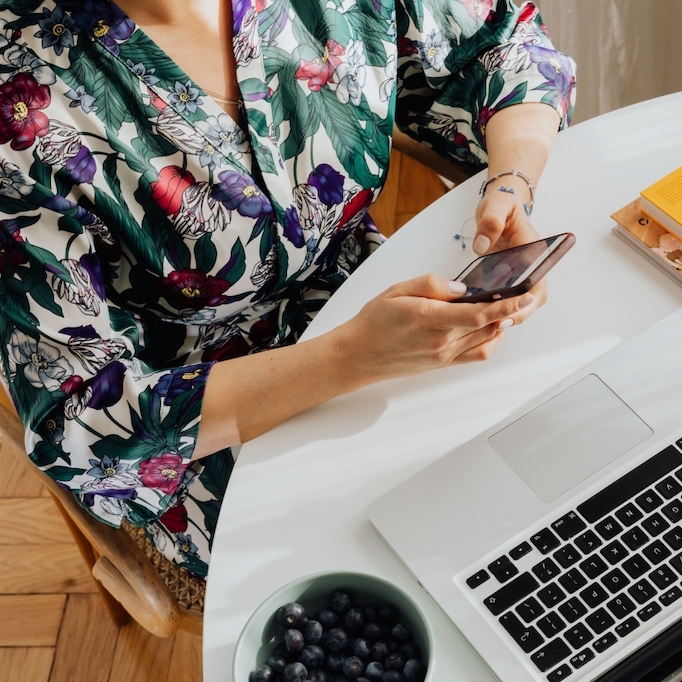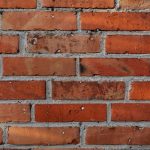
Do you want to learn how to be organized at work and at home?
Are you looking for practical no-nonsense tips on how to be organized?
Good news! Anyone can learn how to be organized (including you).
You just need the drive, determination, and persistence to make your organized dreams a reality.
And in case you were wondering, organization skills do not exist in a vacuum.
Organized people refine their organization techniques and approaches from time to time.
Organization skills can always be improved upon, reworked, or streamlined.
If you want to become an organized person, then you need to practice organization skills on a regular basis.
In this thoughtful post, you’ll find six simple tips on how to be a more organized person.
Incorporate these smart tips into your daily routine and you’ll soon be on your way to a more organized life.
Ready to become a more organized person? Let’s begin!
Organize like items with like.
The first step in organizing items is to match similar items with similar items.
It doesn’t matter if you organize clothes, books, makeup, or paper.
The purpose of organization is to match like items with like.
While this is an extremely basic concept, it can sometimes be difficult to grasp.
If you want to truly understand the “like with like” concept, you must learn to objectively view items in your home or office as items of a certain type.
You must view your belongings through a different lens than to which you’re accustomed.
Here’s a simple example for you. Let’s say you want to organize your clothes closet. You remove all your clothes from the closet so it is empty and ready to receive items.
Now, your first step is to assemble the clothing from your closet in one area of your bedroom. This could be on top of a freshly made bed, counter, or dresser top.
After you assemble your clothing, you match similar items with similar items. You gather t-shirts with t-shirts, slacks with slacks, jackets with jackets, and so on.
After you organized like items with like, you return the clothing the closet and hang them neatly, one by one.
See how easy that was? We took similar items (clothing), grouped them together, and grouped similar items together (t-shirts, slacks, jackets).
You can apply this “like items with like” approach to almost anything: from pens with pens in an office supply cabinet, to canned soups with canned soups in the kitchen pantry, to personal items with personal items in the bathroom.
So, the next time you are looking to organize a collection of miscellaneous items at home or at the office ask yourself, “Am I organizing like items with like items?”
If the answer is yes, you’re well on your way to a more organized way of living. If the answer is no, you’ll need to stop what you’re doing and take an objective look at your progress thus far.
Choose an organization method…and stick to it.
There are countless ways to organize items. You can organize items by shape, size, color, or function, just to name a few! (If you want to expand your organization horizons, check out my post, 40 Thoughtful Ways You Can Organize Items.
Now, while you do have the freedom of organizing items however you so choose, you have to follow the second cardinal rule of organization.
And that rule is: once you select an organization method, you absolutely must follow that method to the letter.
Why is this the case? Things can become quite confusing if you’re constantly switching back and forth between different organizing methods.
Retrieving items will become more difficult to locate and storing items will become a hassle, too.
For clarity’s sake, let’s go back to the closet example we gave earlier. Let’s say you’ve decided to organize your clothes by clothing type, t-shirts with t-shirts, slacks with slacks, and so on.
You regularly replace clothes into the closet following your organization method of clothing type. Later in the week, however, you decide to organize your clothes by color and set about making the necessary changes in your closet.
The only problem is that you haven’t made a solid decision as to which organization method you’ll use.
You find it more and more difficult as the weeks pass to locate individual items of clothing because you’re constantly working with a pseudo organization combination of clothing type and color.
Now, this isn’t to say that you aren’t ever allowed to change organization methods. You can always choose any organization method you’d like for any organization project.
The point I’m trying to make here is that once you select an organization method, you need to stick with it. This method will literally set the framework for your organizing habits in the months to come.
You have to be one who sets, and regularly maintains, your organization method of choice. If you don’t, you may be in for a rude awakening when you attempt to find something!
Do yourself a favor: be adamant when you set and follow your organization method of choice.
Give items a permanent home.
If you want to easily locate items, then you must give items a permanent home.
You don’t think twice when you reach for opened condiments in the refrigerator or nor do you bat an eye when you pull out your favorite sundress from your closet.
So, why wouldn’t you give all those books, files, crafts, or appliances a permanent home in your home or office space?
Designate permanent storage locations for items in in your home or office.
You’ll quickly locate items when you need them. What’s more, it will be easy to put things where they belong when you’re finished using them.
You can create permanent homes for items using the following guidelines. You must consider the item’s:
- Usage – Is the item used regularly or occasionally? Store frequently used items in easy-to-access locations.
- Location – Is the item stored in the correct location in the home or office? Take care to store items closest to the location where they will be used.
- Size – Is the item in question small or large? If the item is small, what are the best storage options based on location and usage? If the item is large, what adjustments must be made to the proposed storage location to accommodate the item?
Return items to their storage location.
This tip is an absolute must if you want to keep things organized. If you think you can skip this habit and get stellar results, think again!
You must return items to their designed storage locations when you’re finished using them.
Sure, you can assign storage locations for appliances, makeup, clothing, or office supplies in your home or office until the cows come home.
But if you don’t replace items where they belong when you’re finished with them, your organization efforts will be in vain.
If you practice this skill regularly, then it will become an automatic habit.
You will return an item back where it belongings when you’re finished using it.
In most cases, it only takes a couple of minutes to return an item back to a storage location.
Here are three opportunities during the day when you can return items to their storage locations:
When you’ve finished working on a project or assignment.
This is perfect time to tidy up any materials or items you’ve used throughout the day.
Finished crafting? Pack up and store the glitter and glue gun.
Completed those household chores? Put away the vacuum cleaner, dust cloth, and cleaning solutions.
Finished cooking meals? Store leftover food in the refrigerator, and wash and dry tableware, utensils, pots and pans.
At the end of the work day.
Take 30 minutes at the end of the work day to put away and prepare items for the next day.
Return office supplies to the supply cabinet or desk drawer, return files to the filing cabinet, replace tools in their designated storage area, and wipe down countertops and workspaces.
At the end of the day at home.
Tidy up your home in the evening before you take out the trash, lock windows and doors, and get ready for bed. Take 15 minutes to walk around your home and pick up and/or return items to their appropriate storage area.
Work within your personal preferences.
This may come as a surprise, but you have the ultimate say when it comes to how you organize your life.
That’s quite a relief, now isn’t it?
You get to decide how you’d like to spend your time and energy in a way that works for you and your lifestyle.
At a very basic level, you must first understand your personal preferences and then work within those preferences.
Some people like to organize items on a broad level, while others like to organize items on a narrow level.
There are even people who like to use a combination of the two in their lives. Believe it or not, all of this counts as being organized.
What matters most is that you can located what you need when you need it, and are satisfied with the organization system you’ve selected for yourself.
You can organize items any way you like. If your neighbor organizes their canned soups alphabetically by type in their kitchen, guess what? There’s no organization rule that says you must follow what others do!
You can organize items however you like! You may choose to organize canned soups with dry soup packets, organize soups by can size, or even brand.
Perhaps you devise a completely different organization method that works for your needs. The possibilities truly are infinite!
Remember: it takes time to organize items. Be choosy about how, and when, you’ll spend your time and energy.
How to be Organized in your Life? Practice!
What’s the bottom line when it comes to being organized?
Organization is like any other skill. You must practice organization on a regular basis if you want to improve your skills. And of course, the best way to practice organization skills, is to actually organize items on a regular basis.
Unfortunately, people mistakenly believe that taking the time to organize items will take away hours of their time.
This couldn’t be further from the truth. Being organized will flat-out save you time. You can easily locate what you need with ease.
What will take away solid hours of your time is an unruly, unmaintained, and disorganized space.
And that translates to stressful hours spent sorting, digging, and searching for items…and repeating the dreaded process anytime you want to find something.
You can look at it this way: would you rather spend five hours searching for something or spend a mere five minutes putting something away? The choice is yours!
You don’t have to spend hours upon hours organizing items. It only takes a couple of minutes to put items back where they belong when you are finished using them.
Spend five to ten minutes a day to tidy up your home and office. If you are consistent in your work, you’ll keep clutter at bay and keep your living space in tip-top order.
And the best part about all of this hard work? Not only will your living and workspaces be neat and tidy, you’ll have time to actually enjoy and use them to your heart’s content.
That’s not a bad trade-off, now is it?
Learn how to BE organized at the office
Organizing an office well requires careful thought, planning, and of course, targeted action.
My organization guide will teach you how to be more organized around the office and home.
If you want to organize your office or home so you can find what you need when you need it, then check out my productivity consulting services. Book a strategy session with me today!
How about you? Which of these how to be organized points surprised you the most? Can you think of any other habits you’ll need to adopt if you want to be organized? Join the conversation and leave a comment below!





0 Comments